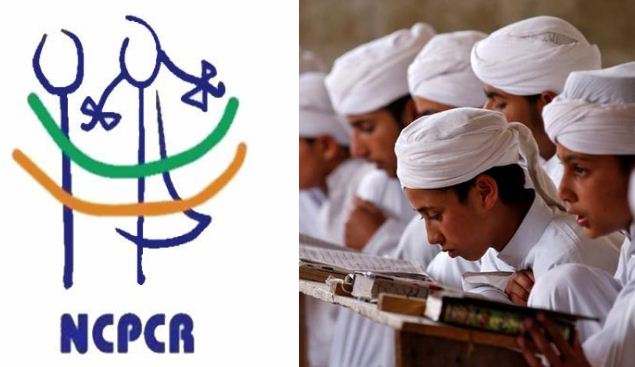The National Commission for Protection of Child Rights (NCPCR) published a report on August 10th based on a nationwide survey of 23,487 minority schools. The report called “Impact of Exemption under Article 15 (5) with regards to Article 21A of the Constitution of India on Education of Children in Minority Communities’’ documents the assessment of minority schools (schools run by minority organisations) in the country. NCPCR has suggested the government to bring these schools under both Right to Education (RTE) and Sarva Shiksha Abhiyan campaign. The NCPCR also recommended reservations for students from minority communities.
NCPCR Chairperson Priyank Kanoongo while talking to The Indian Express said, “The study aimed to assess how the 93rd Amendment, which exempts minority institutions from the otherwise mandatory provisions of Right to Education, has affected children belonging to minority communities and whether there has been a gap.”
Kanoongo said, “Many schools, we know, have registered as minority institutions, simply because they don’t have to implement RTE. But can Article 30, which ensures the right of minorities to open their institutions for cultural-linguistic and religious protection, contravene what is in Article 21(A) which protects a child’s fundamental right to education. Surely Article 21 (A) must prevail.’’
“This exemption needs to be reviewed. Through the report, the Commission has recommended to the government that the Right to Education and Sarva Shiksha Abhiyan be extended to all minority schools, including madrasas,” he added.
As per the NCPCR survey report, Non-minority communities constitute 74 per cent of students in Christian missionary schools. The same report stated that the majority of out-of-school children – at 1.1 crore – belonged to the Muslim community.
Giving a religion-wise division of the schools, the NCPCR report states that while Christians comprise 11.54 per cent of India’s minority population, they run 71.96 per cent of schools and Muslims with 69.18 per cent minority population constitutes 22.75 per cent of the schools. Sikhs comprise 9.78 per cent of the minority population and compose 1.54 per cent of schools; Buddhists with 3.83 per cent minority population make 0.48 per cent of schools, and Jains with 1.9 per cent minority population run 1.56 per cent of schools.
The NCPCR report also states that the curriculum of madrasas are not uniform, and “being left ignorant of the world around them, many students develop an inferiority complex, being alienated from the rest of society and unable to adjust with the environment”.
Read More: NCPCR calls for modernization of Madrasas.
Providing the instances of disproportionate numbers, the report says, “For instance, in West Bengal, 92.47% of the minority population is of Muslims and 2.47% are Christians. On the contrary, there are 114 Christian minority schools and only two schools with Muslim minority status. Similarly, in Uttar Pradesh, though the Christian population is less than 1% there are 197 Christian minority schools in the state. This unbalanced number takes away the core objective of establishing minority educational institutions.”
It adds, “Despite the large presence of minority students in school-going age groups, minority schools are catering to less than 8%of the minority children population. Hence, there is a need to lay down specific guidelines regarding the minimum percentage of students from the minority community to be admitted to the institution.”
The Right to Education Act 2009, also known as the RTE Act 2009, was enacted by the Parliament of India on 4 August 2009. It describes modalities of the importance of free and compulsory education for children aged between 6-14 years in India under Article 21 (A) of the Constitution of India. Specifically, Section 12(1) (c) of the Act provided a 25 per cent reservation of seats in unaided schools for admission of children from economically weaker sections and disadvantaged groups.
In contrary to these Acts, Article 30 of the Constitution states that the minorities hold the right to establish and administer educational institutions, to provide opportunities to children from different religious and linguistic minority communities.
In 2012, an amendment was introduced to exempt the institutions imparting religious education from following the RTE Act. Later, in 2014, the Supreme Court declared the RTE Act inapplicable to schools with minority status so that the Act does not interfere with the right of minorities to establish and administer institutions of their choice.
With the survey, the NCPCR aimed at evaluating the impact of the exemption of minority educational institutions, such as Madrasas from various guidelines that are mandatory for non-minority institutions.
The NCPCR believes that the Article 21A which guarantees the fundamental right of education to all children, Article 30 which permits minorities to set up their institutions with their own rules and Article 15 (5) which exempts minority schools from RTE are “creating a conflicting picture between the fundamental right of children and right of minority communities’’.
However, the politicisation of minorities in the country will be a big challenge for the Modi government while implementing these rules.































